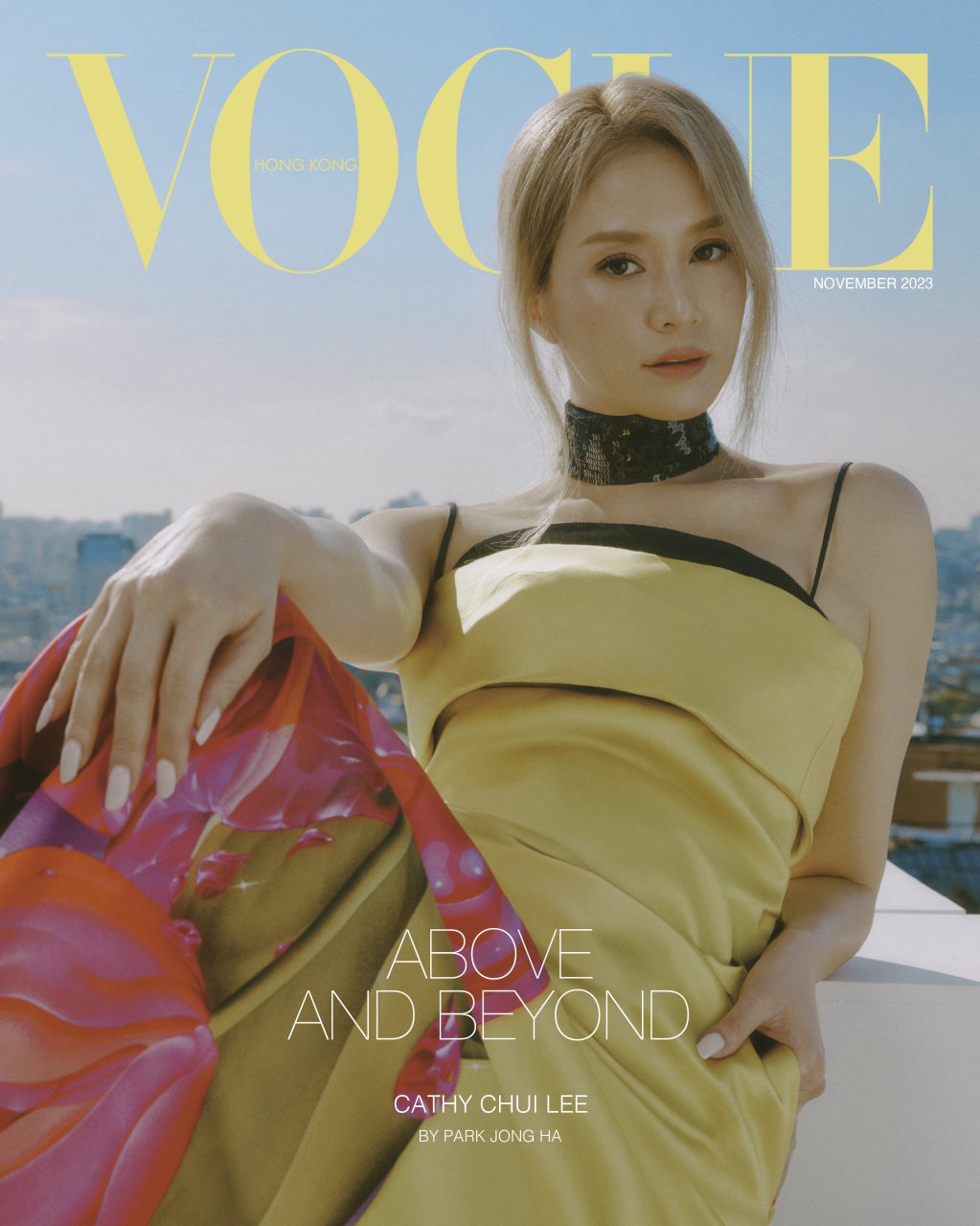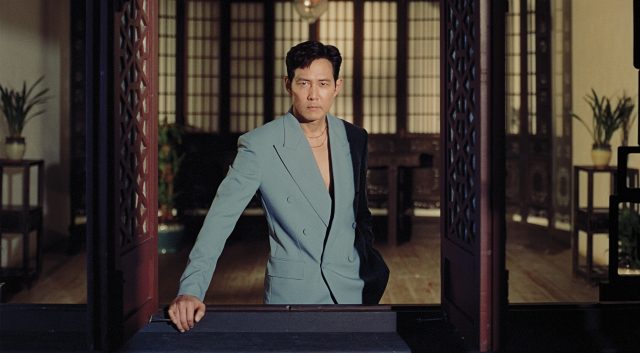Hong Kong beauty and philanthropist Cathy Chui Lee is stepping back into the spotlight. While she’s been keeping busy raising her four children and quietly making a difference through charitable endeavours, she returns under the lens of Vogue Hong Kong this November and speaks to us about her advocacy for sustainability and the arts.
It’s been five years since we last met at the Vogue Hong Kong launch party. How have you been?
Time really flies, it’s already been five years! I feel like both Vogue Hong Kong and I have grown a lot during this time. I am proud and elated that Vogue Hong Kong has become such an established and iconic publication in Hong Kong. As for me, I’ve continued to learn and expose myself to new things. In accompanying my children through their growth, they have also taught me a lot in return — parents are not the only ones passing on their knowledge. For me, learning new things and innovation is important. I believe that life is a constant “work in progress”. Nevertheless, I think there are always exceptions. Some things do not change and are even worth preserving.
You mentioned that some things are worth preserving. Can you tell us more about your involvement in the Kong Ha Wai conservation project?
The reason I became so interested in participating in this conservation project begins with the story of my grandmother. Kong Ha Wai was built in 1935 by Mr. Wong Fong Kiu, an Indonesian-Chinese man who immigrated to Hong Kong. My grandparents also immigrated to Hong Kong from mainland China around the same time, but since my grandfather passed away early, my grandmother had to work multiple jobs alone to raise seven children and settled down in Hong Kong since. Her bravery and resilience left a deep impression on me. My father-in-law also came to Hong Kong in the 1940s, and hearing his stories helped me understand Hong Kong’s environment at that time. Therefore, this mansion reminds me of an era when many people came to Hong Kong from different places to put down roots and build homes. Each of these people has a different story, braved different challenges, and worked hard for the future of this city for the next generation. I hope that by preserving buildings with historical value, their spirit can be passed down from generation to generation.
What makes Kong Ha Wai worth preserving?
While Hong Kong has buildings with new designs, traditional buildings are also worth conserving. Kong Ha Wai in Yuen Long is a prime example. Over 90 years old, it’s a Grade III historic building that is well-preserved with traces from different eras. It is extremely rare among existing Hakka architecture in Hong Kong. The residence has witnessed many changes over time. Henderson Land decided to preserve it and began its full restoration in 2022, in the hopes that future generations can learn more about this type of traditional cultural heritage site and catch a glimpse of how people lived in the past. Many traditions would otherwise be lost or discarded with time, so we hope to preserve culture through architecture wherever possible.
Were there any interesting discoveries during this conservation process?
The story of Kong Ha Wai is very interesting. Built in 1935, it was the place of residence for the family that owned it. They lived there happily, and their descendants grew up there. As Hong Kong developed, the use of this building changed over time. It was once lent to the British Hong Kong government as a temporary police station to maintain order in the Kam Tin Pat Heung area. During Hong Kong’s industrial boom in the 1960s, factories were built within the residence grounds. Kong Ha Wai is filled with possessions of former residents, such as antique furniture, account books, seals, train tickets, school textbooks and even some ‘60s fashion magazines from abroad. Traces of its time as a police station and factory can still be seen, which helps us understand how people lived in the past. The conservation team is cleaning and restoring artefacts of historical value, hoping these precious items can be showcased to the public in the future.
We know you often participate in art events and have your own unique perspective on art. Do you think Kong Ha Wai holds any artistic value?
Upon my first visit to Kong Ha Wai, I was amazed not only by its 90-year history but how pockets of artistic flair could be found throughout. While adopting the traditional layout of a Hakka village house, its exterior is influenced by Western architecture: the granite pillars flanking the main entrance are topped with vivid Chinese guardian lions, a fusion of Eastern and Western designs deemed avant-garde for its time. Decorative carvings with symbolic auspicious motifs can also be found throughout the residence, showcasing the folk craftsmanship and aesthetics of the past, as well as the former owner’s tastes.
How does conserving Kong Ha Wai relate to sustainable development?
Conserving a historical building through restoration is just the first step. For its historical value to be sustained, the forgotten building must regain purpose and functionality through revitalisation. I hope that Kong Ha Wai can be open to the public for visits in future and host different workshops involving the community to understand its conservation process. It could even be transformed into an exhibition space for artists or groups to host shows and promote Hong Kong culture hand in hand. By breathing new life into the residence with the participation of our community, I believe the history and culture of Kong Ha Wai can be conserved and passed down, achieving sustainable development.
What role does art play in your life?
Art is more than aesthetics, it’s a way to remember what has happened over time. It can reflect the culture and trends from different places across the globe, but more importantly, it can be a tool for people to express their emotions and feelings. I enjoyed painting as a child and expressed different emotions and thoughts throughout the process, so I think art is very useful. Through collaborating with various charities, mostly involving children, I learnt more about art therapy. For some children who are too young to express themselves or afraid to speak up after being hurt, we can understand their inner worlds through their paintings to find solutions, so I think art is very powerful.
You’ve been involved in different charitable work and have visited refugee camps in Jordan and Cambodia in the past. Has the pandemic impacted your charity work in recent years?
The pandemic impacted our charity work as we couldn’t travel overseas. We focused on children in need within Hong Kong, especially those struggling with mental health. As children could not go to school, many families were trapped in the same space together during the pandemic, causing mental strain on both parents and their kids. Later when children returned to school, some of them faced adaptation issues and suffered from anxiety. Save the Children set up workshops in Sham Shui Po for kids to join computer classes, interest clubs and homework support services in hopes of relieving their stress. During the pandemic, we also donated many computers and wireless network appliances to low-income families to help with online learning and reduce their burden.
It’s been five years since you modelled for a fashion magazine. How was your Vogue Hong Kong cover photoshoot? How did it differ from the photoshoots from your modelling days?
I started modelling at 14. I had to wear mature clothing and even wedding dresses in photoshoots from a young age, so I didn’t like to tell friends I modelled as it felt embarrassing. Somehow, I didn’t feel awkward facing photographers. Having modelled for so long, being in front of the camera feels natural. In the past, my photoshoots required me to showcase a sweet image, which took me a while to get used to. During this Vogue Hong Kong cover shoot, the photographer and stylist asked me to be natural. My instinct was to smile, but they asked me not to smile, which felt a bit unfamiliar, and I needed to focus on controlling my smile. I think the biggest difference would be this, but the whole shoot was still very comfortable and natural.
However, if you asked me to take selfies now, I’d be stumped! I’m still searching for the perfect angle, so I usually use my phone to take photos of the kids. I’d have to ask my husband for help taking selfies! (Laughs)
Editor
VOGUE HONG KONG












